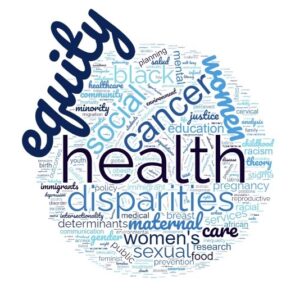As the world celebrates International Women’s Day, the Institute for Scientific Information at Clarivate explores an area of disproportionate inequality for women: health equity.
Today is International Women’s Day. Each year, the United Nations acknowledges International Women’s Day as a day to not only honor women, but also bring awareness to prevailing challenges faced by women and girls around the world[1]. Celebrated since 1975, special events include conferences, performances, panels and volunteer initiatives. This year’s International Women’s Day theme is #EmbraceEquity[2], which calls for active engagement with and advocacy for an inclusive and equal world.
As detailed in our recent article, “Gender equality in research: papers and projects by Highly Cited Researchers,” there is a growing body of literature on disparities in women’s access to healthcare and patient experience, with examples including maternal health as well gender bias in diagnosis of disorders such as autism. In this article, we share recent insights on gender health equity trends from the Institute for Scientific Information (ISI)™ at Clarivate™ on the gaps to adequate patient care women face and the opportunities for progress.
Health equity as a human right
The World Health Organization identifies the right to health as one of the fundamental rights of any human being. This includes the freedom to control one’s health and body, the freedom from interference to making such decisions and the right to have full access to health protection systems that provide an equal opportunity to attain and enjoy the highest level of health[3].
However, despite increased awareness of health rights, women continue to experience increasing physical violence[4] and unequal access to healthcare overall. For example, the UN Women Division estimates that more than 700 million women worldwide, almost one in three, have experienced physical or sexual violence at least once in their lives[5]. This is in addition to the finding by the World Bank that five million women, children and adolescents die from preventable health conditions every year[6]. While women suffer many of the same health challenges as men, they often experience them differently due to body differences, roles in childbearing and childbirth and social and economic disadvantages. Experiences of violence and social inequity are therefore compounded by discrepancies in healthcare access.
Longstanding gender bias in healthcare
The United States Centers for Disease Control and Prevention (CDC) defines “health equity” as: “In a fair and equitable society, all human beings should have equal access to health services and the opportunity to attain good health in their lifetime”.
Research on the topic of “health equity”[7] and women reflects the focus of the scientific community. We used the Web of Science Core Collection™ to retrieve all articles that cover specifically “health equity” AND women and girls in the past 10 years and created a word cloud of the most recurring keywords and titles. This dataset included 1,816 papers.
Figure 1 shows that “cancer” is by far the most frequent keyword found in articles that cover health equity and women, followed by “maternal.” A closer look at these keywords reveals that studies also focus on “Black,” “African” and “rural” communities in the context of “disparities” and “inequalities,” which are also two of the most visible keywords in this word cloud. This could indicate that in the past decade, persistent challenges related to health equity and equal access to health services for historically exploited and rural women are drawing the attention of researchers. Research demonstrates that minority women and those living in rural areas experience higher levels of mortality overall, especially higher rates of maternal mortality, as well as gender bias across the healthcare system (see[8],[9] and [10]).
Figure 1: Recurring keywords in research on health equity and women. Created by wordcloud.com.

For this study, we also included a search for “health equity” in our global database of dissertations and theses. The ProQuest Dissertations & Theses Global (PQDT)™ database is the world’s most comprehensive curated collection of multi-disciplinary dissertations and theses from around the world, offering more than five million citations and three million full-text works from thousands of universities. Exploring dissertations allows us insights into the topics researched by graduate students around the world. When assessing dissertations on health equity and women, we discovered a steady growth in the number of dissertations on these topics published in the past 10 years.
Figure 2: Growth of dissertations on health equity and women in PQD

The keywords extracted from these dissertations demonstrate the frequency of studies that explore health equity in relation to cancer, maternal and sexual health as they relate to equity. As found in our research on published articles, dissertation keyword analysis similarly reveals a focus on marginalized groups such as Black and immigrant women.
Figure 3: Recurring keywords in dissertations on health equity and women. Created by wordcloud.com

As we celebrate and embrace equity on March 8 during International Women’s Day and every day, it is important to highlight the need for attention and action on health equity for women, particularly those from historically marginalized groups. While studies point to disparities in women’s access to services and needed care, there is optimism to be found in the growth of new literature on this important topic – suggesting that the information needed for change is increasingly available
At Clarivate, sustainability is at the heart of everything we do – and this includes support of human rights, diversity and inclusion, and social justice. Read more about our commitment to driving sustainability worldwide and see highlights from our Clarivate Sustainability Report.
[1]The United Nations also recognizes the importance of gender equity through its 17 Sustainable Development Goals (SDGs). SDG-5: Gender Equality aims to end all forms of abuse, discrimination and any harmful practices against girls and women around the world. https://sdgs.un.org/goals
[2]https://www.internationalwomensday.com/theme
[3]https://www.who.int/news-room/fact-sheets/detail/human-rights-and-health#:~:text=The%20right%20to%20health%2C%20as,consensual%20medical%20treatment%20and%20experimentation
[4]https://clarivate.com/blog/highly-cited-papers-in-sdg-16-peace-justice-and-strong-institutions/
[5]https://www.unwomen.org/en/what-we-do/ending-violence-against-women/facts-and-figures
[6]https://blogs.worldbank.org/health/gender-equality-health-still-long-way-go#:~:text=Women%20don’t%20have%20equal,preventable%20health%20conditions%20every%20year.&text=COVID%2D19%20has%20limited%20women’s%20ability%20to%20seek%20healthcare
[7]https://www.cdc.gov/chronicdisease/healthequity/index.htm
[8]https://www.who.int/news/item/28-06-2021-the-future-we-expect-women-s-health-and-gender-equality
[9]https://www.weforum.org/agenda/2023/01/women-health-gap-davos-2023/
[10]https://www.unwomen.org/en/digital-library/publications/2022/07/gender-equality-for-health-and-well-being



